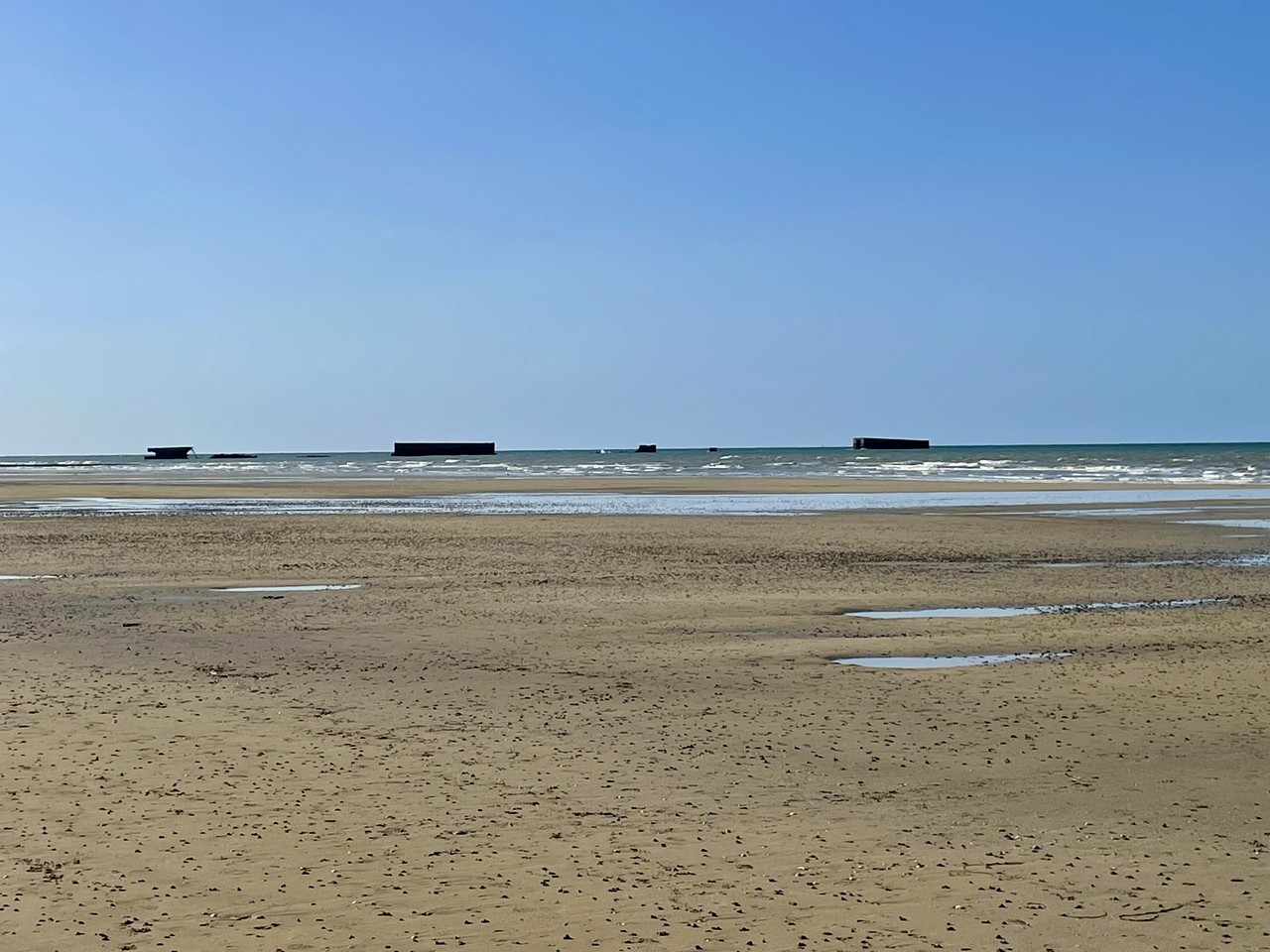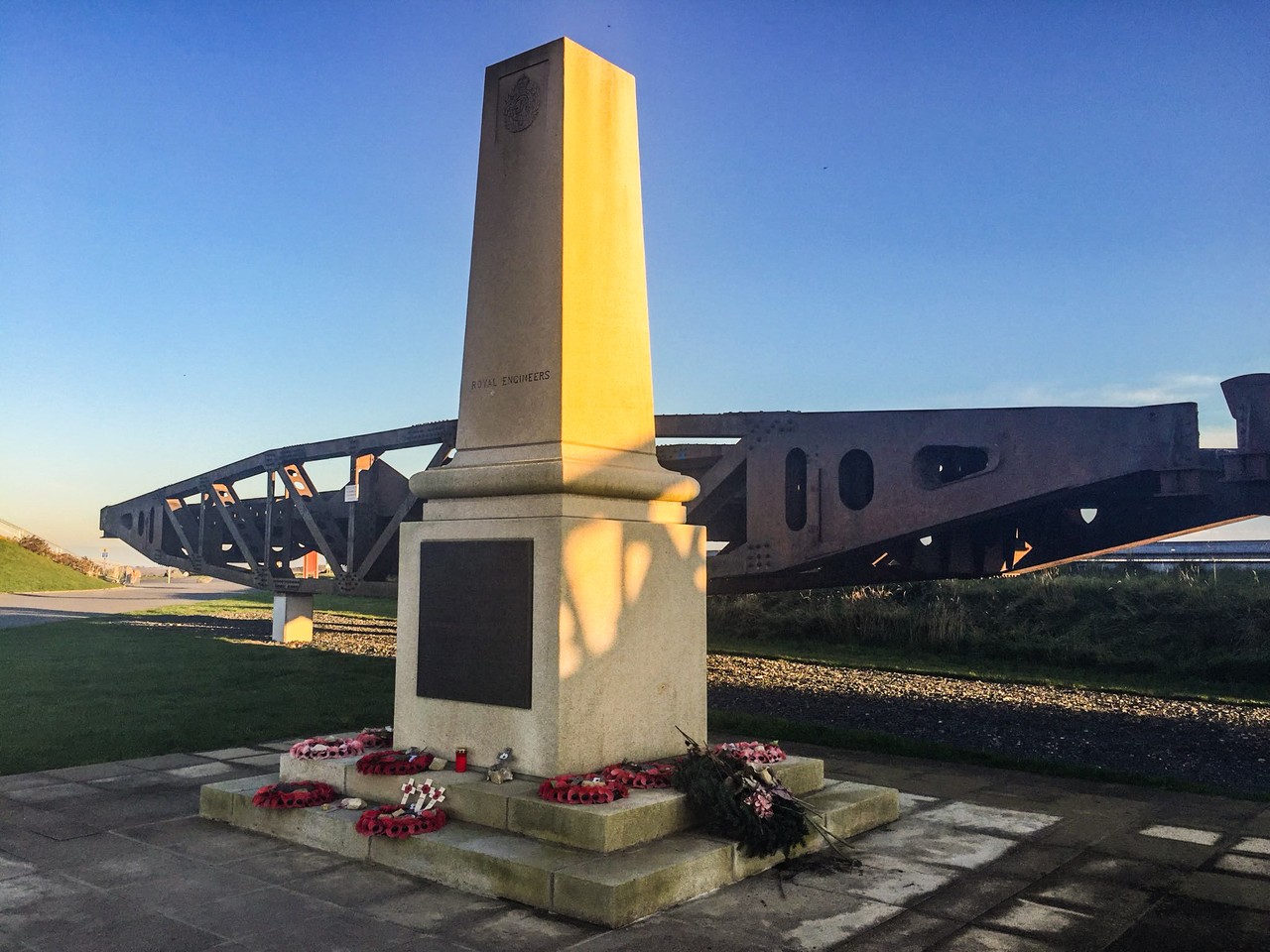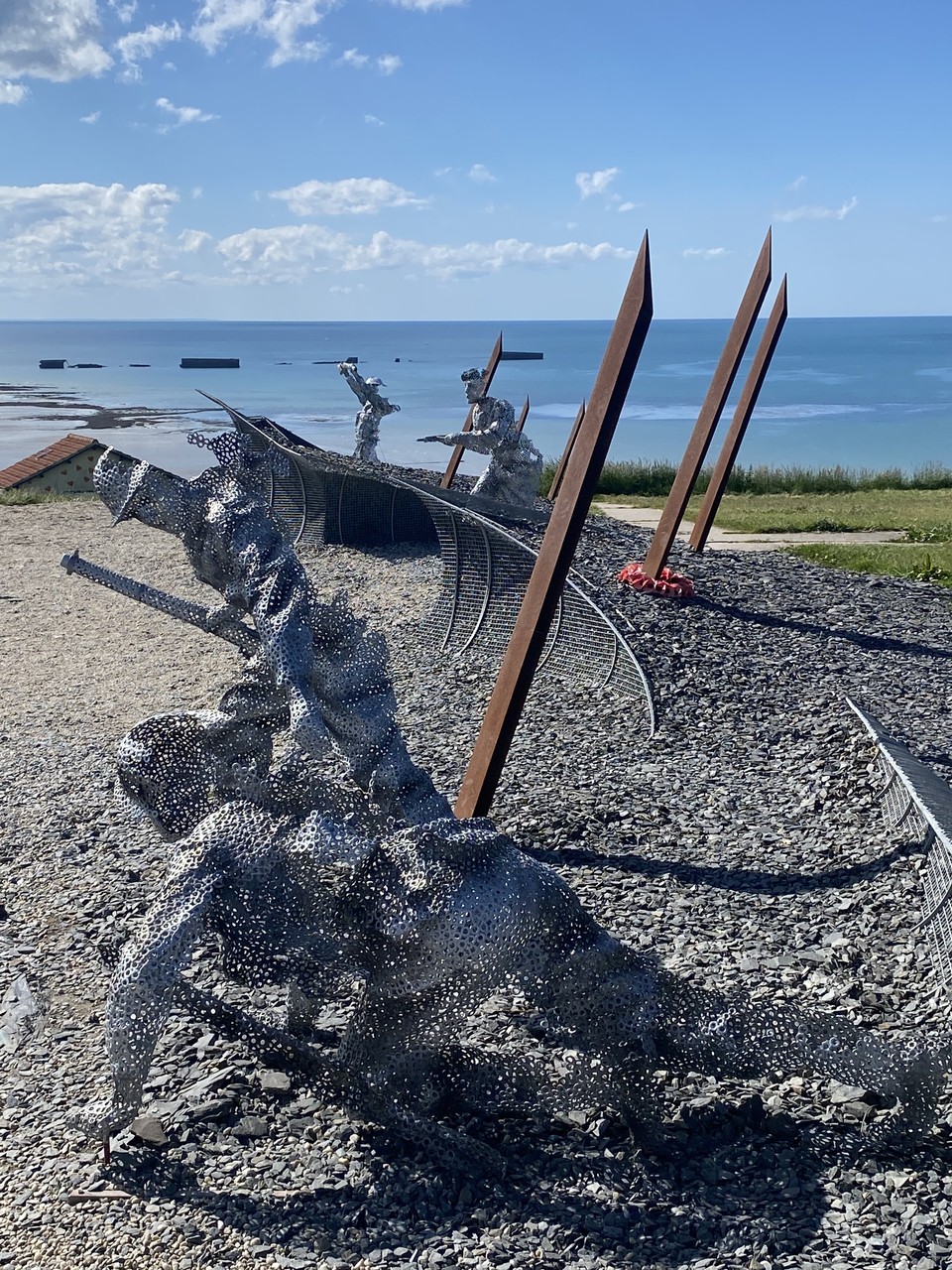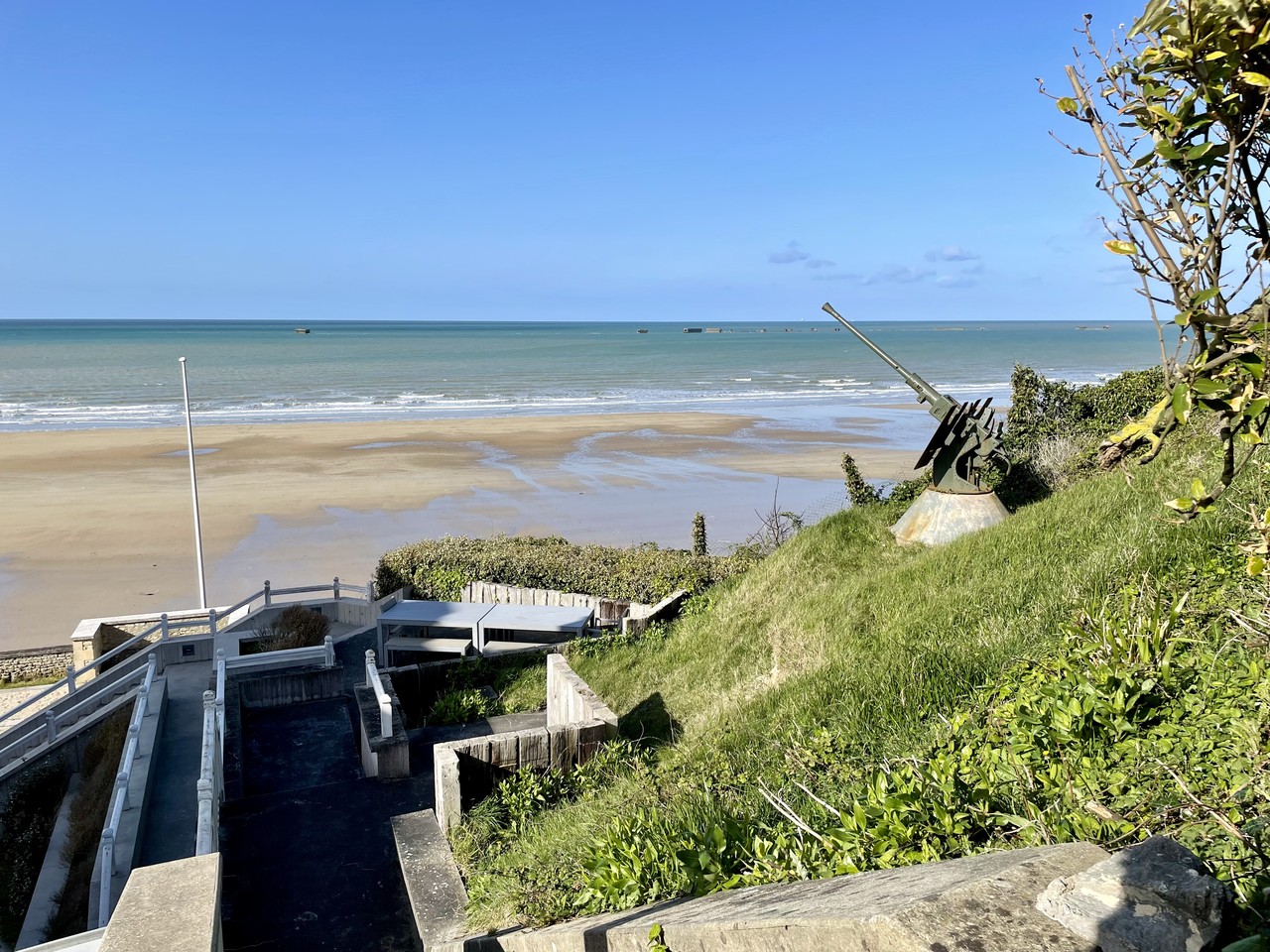Arromanches occupation to liberation
Francja
Oznacz
Plan
Udostępnij
Trasa
Between 1940 and 1945, the small seaside village of Arromanches-les-Bains became engrained in the history of the Second World War. This once quiet village became crucial to the Allies following the D-Day landings of 6 June 1944.
In the summer of 1940, Nazi German occupied the region of Normandy. Life changed for the civilians of the area who were now watched by the German forces. This included identity and document checks being conducted, as well as, for some, their conscription into the German war effort with construction.
Civilians from the village were forced to work on the manufacturing of defensive positions on the Normandy coastline or even transported to Germayn to assist with their war effort. Those that went to work had little choice due to the circumstances.
Civilians also witnessed some aerial activity over the years, from reconnaissance of the coastline being conducted through to bombing raids hitting German military targets in France.
The picturesque coastal landscape changed with the construction of the Atlantic Wall, with German resistance nests being built in either side of the village. This included a radar position on the cliffs to the east.
On 6 June 1944, things changed for the civilians, sadly some of whom would be killed. On the morning of D-Day, the Allies targeted the German defensive positions and throughout the day numerous aerial attacks were made on the village targeting the German forces. Some French civilians were caught in the crossfire.
On the evening of 6 June 1994, the men of the 1st Hampshire Regiment, British 50th Infantry Division, who had landed earlier that day on ‘Gold Beach’, made their way into the village from the east. They liberated the village with little to no resistance from the German forces who had withdrawn.
Very quickly, Royal Engineers began to prepare the village to facilitate the artificial ‘Mulberry Harbour’ that would be positioned off the coast This was speedily assembled over the coming weeks and later became operational.
The village became a logistical hub in supporting the Allied advance as it broke out of Normandy and France before pushing onwards to Belgium. Hundreds of thousands of tonnes of supplies and thousands of vehicle were landed here and moved on inland as the Allied forces liberated Europe.
Today parts of the ‘Mulberry Harbour’ remain and can be seen on the beach and out at sea. There is also a museum which serves as a reminder of what took place here in June 1944. Additionally, numerous memorials located around the village which was liberated on 6 June 1944 after nearly four years of occupation.









